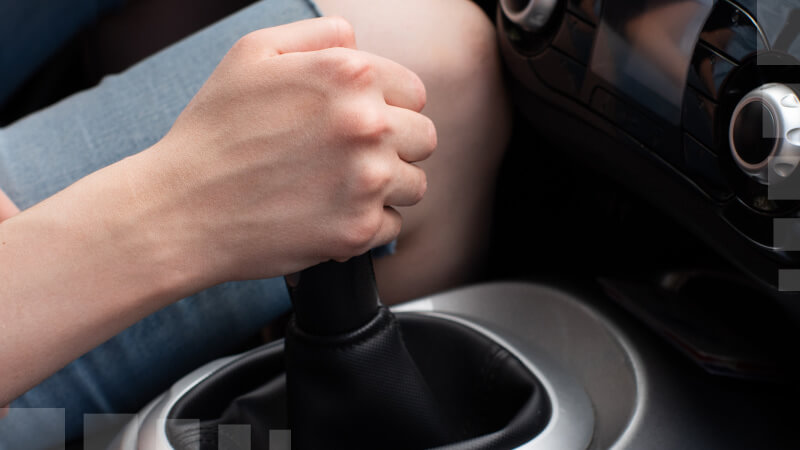
Today, four main kinds of gearboxes are installed on cars:
- Manual gearbox,
- Automatic gearbox,
- Automated manual gearbox,
- Continuously variable gearbox.
The gearbox is an integral part of any vehicle with an internal combustion engine. Its purpose is to transfer and convert torque from the engine to the wheels, as well as to take off power to the drives of other units and additional equipment. This process allows for optimal traction and vehicle speed, as well as reversing. Moreover, the box helps to decouple the engine crankshaft from the drive wheels, which ensures the vehicle is idling or completely stopped.
More than a century's history of the development of the automotive industry has brought to the modern world not only environmentally friendly and powerful engines but also improved gearboxes. The development of this direction has led to the emergence of modern cars with various types of car transmissions. Today we will try to tell you about each of them in as much detail as possible. The knowledge obtained will help you understand the work of each type. Moreover, the most promising profits and aggravating drawbacks we have highlighted will make it clear which of the car transmission types suits you best.
Manual transmission
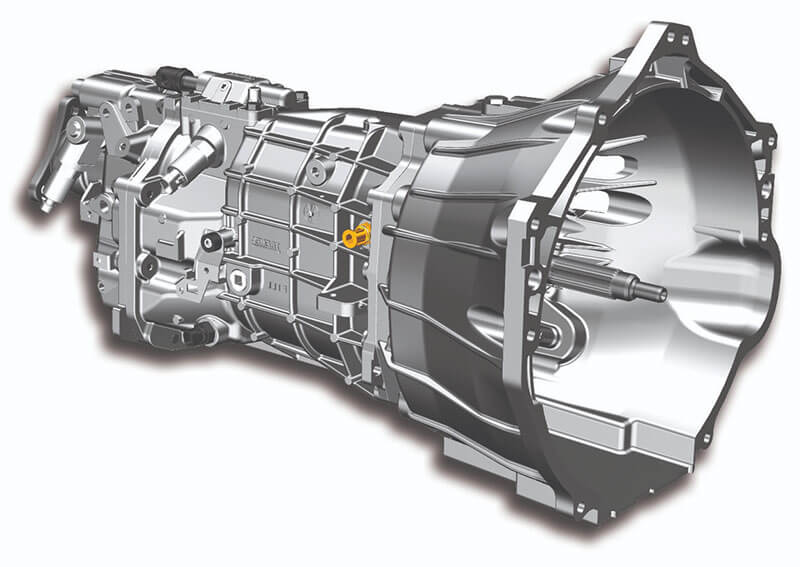
The history of the creation of MT goes back more than a hundred years ago, and the invention belongs to Karl Benz. Structurally, the design of the first box was primitive and extremely simple. The gearbox mechanism was implemented from a pair of pulleys of different diameters, which were located on the driveshaft. The pulleys were attached to the engine shaft using a belt. The belt was moved from one pulley to another using a specially provided lever depending on the driving conditions. This made it possible to adjust the torque transmitted to the drive wheels. Such a simple mechanism has found application in the modern world; gears on bicycles change according to the same principle.
Modern MT has stepped much further from such a mechanism. Structurally, car transmission parts involve a set of gears, and the gear change is carried out by introducing the gears into engagement using a lever. Manual gearboxes can be equipped with a different number of steps. The most popular is the five-speed gearbox. In turn, mechanical-type gearboxes are divided into two-shaft and three-shaft gearboxes.
- Two-shaft manual gearboxes are installed on vehicles equipped with front-wheel drive.
- Three-shaft gearboxes are installed on cars and trucks, which can be equipped with both front- and rear-wheel-drive.
Pros of MT:
- Simple and reliable design,
- Easier off-road driving,
- Driving in economy mode,
- Inexpensive maintenance parts of car transmission.
Cons of MT:
- The inconvenience of control in a difficult city mode.
Automatic transmission
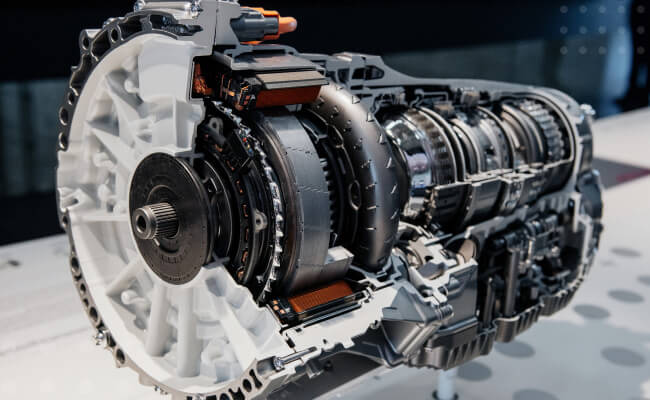
Three independent development parts led to the appearance of the automatic transmission, which was later combined in its design. The automatic transmission was based on a torque converter, an invention of Professor Fettinger, a patent for which he received back in 1903. The other two car transmission parts are planetary gearbox and hydraulic control system.
Unlike the classical manual, a modern AT works in various conditions and according to a different principle, although the chief purpose is unchanged. A torque converter includes a pump, turbine, and stator. All components of the torque converter are enclosed in a common housing. It is filled with a special oil, the pump creates an oil flow inside the torque converter, which rotates the stator wheel and the turbine. Thereby transmitting torque from the engine.
A planetary gear consists of several gears (called planetary or satellites) rotating around a central gear. These parts of car transmission are fixed together with a carrier. In addition, the extra outer ring gear internally meshes with the planetary gears. The satellites mounted on the carrier rotate around the central gear, the outer gear around the satellites. Gear ratios are achieved by fixing various parts relative to each other. Modern gearboxes use multiple planetary gears to obtain a wider range of gear ratios.
The hydraulics work in complete symbiosis with the rest of the automatic transmission, and its work can be compared to the circulatory system. The fluid used as a working fluid and creating pressure in the system also has a set of useful functions, such as lubrication, heat dissipation, and cleansing the interior of the automatic transmission from contamination.
Pros of AT:
- Comfort and ease of use,
- Ability to change gears at full engine power,
- Smooth running during gear changes,
- Protection of engine parts from overloads when choosing the wrong gear.
Cons of AT:
- Cost and frequency of car transmission parts maintenance,
- Greater fuel consumption,
- Low efficiency,
- Fewer vehicle dynamics,
Automated manual transmission
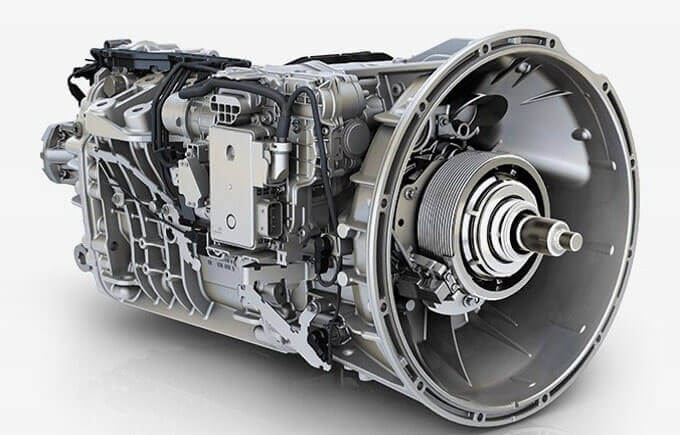
AMT is nothing more than MT, in which clutch release and gear shifting are performed by two servos (actuators), controlled by an electronic unit. In fact, AMT has absorbed all the positive aspects of other car transmission types: MT and AT.
The peculiarity of such a transmission is car parts, namely, the presence of two clutches. The principle of operation of such a gearbox is that even gears are tied to one clutch and odd gears to the second. During the movement, the torque is transmitted through one clutch, i.e., the disk will close. At the same time, the disc of the second clutch is open, but inside the box itself, the next gear has already been formed, and when it comes time to switch, the first disc simply opens, and the second closes synchronously. This scheme of work ensures smooth shifting and no jerking.
In turn, this car transmission is classified into two types:
- Wet clutch used on vehicles with a powerful engine, the torque of which exceeds 350 Nm.
- Dry clutch used on cars with low-power engines up to 250 Nm of torque.
Pros of AMT:
- Smooth-shifting and travel,
- High efficiency,
- Economical fuel consumption,
- High dynamics,
- Choice of transmission operating mode.
Cons of AMT:
- Low reliability, both of the design itself and of mechatronics,
- Cost of maintenance and replacement parts of car transmission,
- Sensitive to heavy road conditions.
Continuously variable transmission
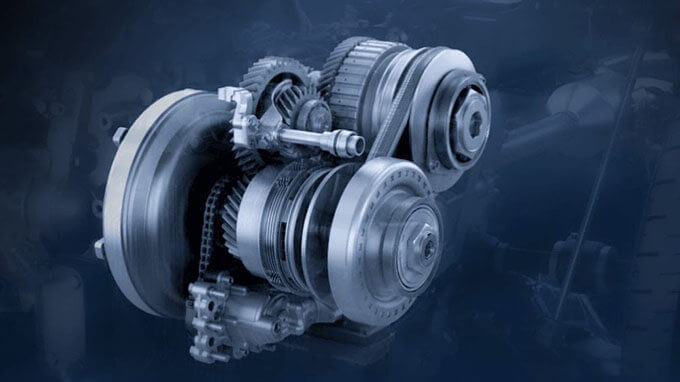
CVTs are considered direct successors of the classic AT. There is a strong opinion that these car transmission types are the future, again, given the urban exploitation of cars. Japanese manufacturers such as Nissan and Subaru place particular emphasis on CVT.
The car gearbox parts are a torque converter and two sliding pulleys, plus a belt connecting them (pulleys). The belt section has a trapezoidal shape. The principle of operation of parts of car transmission is as follows, the sliding halves of the drive pulley push the belt outward, which leads to an increase in the radius of the pulley along which the belt runs. This action increases the gear ratio. When a reduction in gear ratio is required, the driven pulley expands, the belt moves to a smaller radius. The torque converter in this design provides a start-off, after which it is blocked. Electronics control the pulleys.
Pros of CVT:
- Gear shifting is imperceptible, without jerking,
- Economical fuel consumption,
- High dynamics.
Cons of CVT:
- Incompatibility with powerful motors,
- Cost of maintenance and repair parts of car transmission,
- A huge amount of sensors affecting the operation of the CVT,
- Sensitive to heavy road conditions, towing.
We have covered the main car transmission types. Identified the main drawbacks and advantages of each type. But it is impossible to give an unambiguous answer which unit will be the best. Each is good in its range of tasks, and the choice of the unit with which the car will be equipped already falls on the shoulders of the car designers and the consumer. And to purchase transmission parts for your car, visit PartSouq. We will help to avoid one of the common problems, the high price of maintaining a gearbox.
What are car gearbox models FAQs

- What are the parts of a car transmission?
The structure of the car's transmission generally includes:
- Clutch or torque converter;
- Transmission;
- Main gear including mechanical gear and differential;
- CV joint (for front-wheel drive vehicles) and wheel drive shafts (axle shafts).
- How much are transmission parts?
Average transmission repair costs range from $300 to $1,400. This is one of the most expensive car repairs. However, you can keep the cost down by purchasing reliable car transmission parts from PartSouq.
- What are the signs your transmission is broken?
The main symptoms of a transmission failure include:
- Gear does not turn on,
- Noise in neutral,
- Jumping off the gear,
- Grinding transmissions or shaking a car when shifting gears,
- Check engine warning light,
- Seizing the clutch,
- The smell of burning,
- Fluid leak.